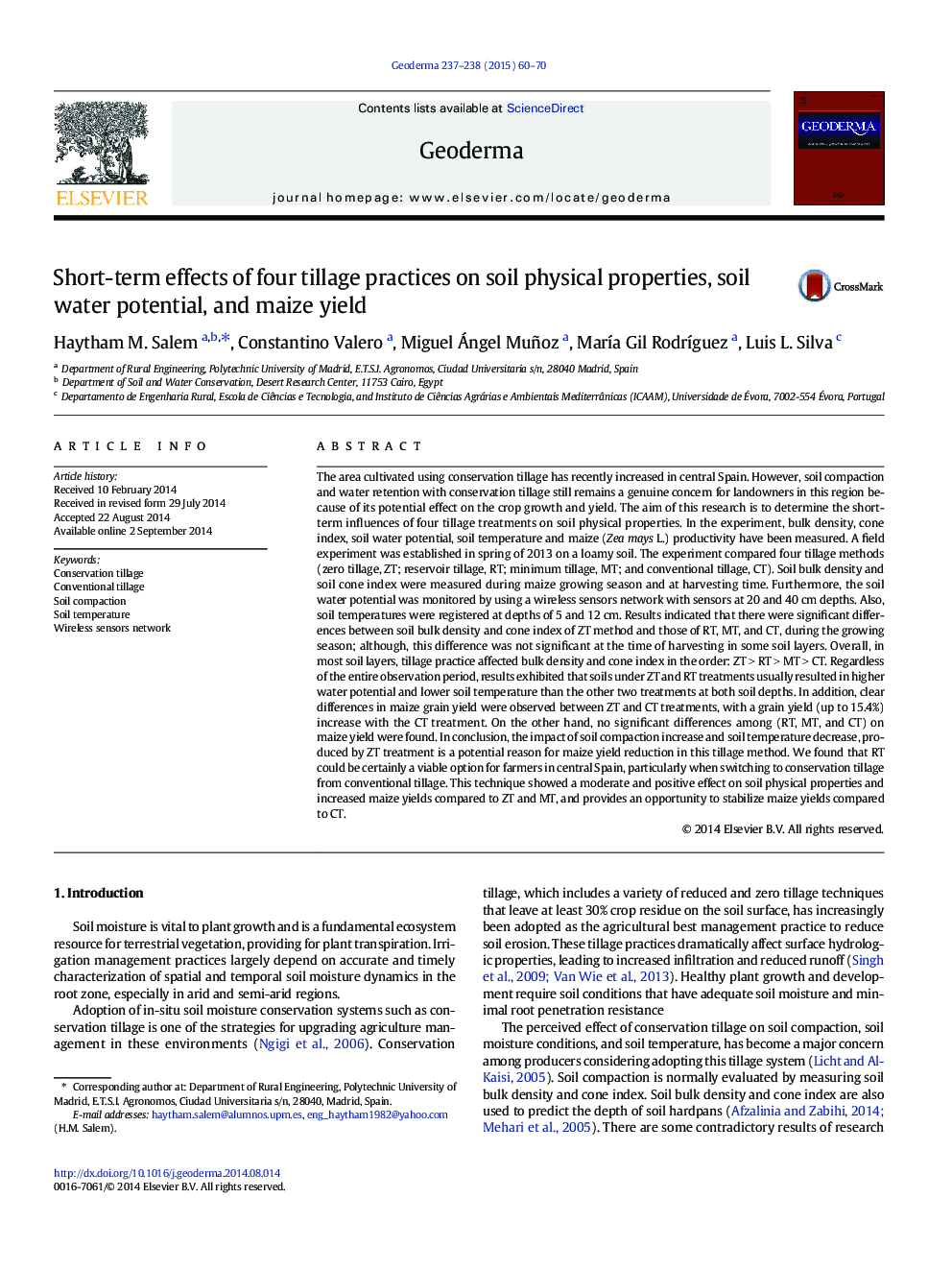| کد مقاله | کد نشریه | سال انتشار | مقاله انگلیسی | نسخه تمام متن |
|---|---|---|---|---|
| 4573270 | 1629467 | 2015 | 11 صفحه PDF | دانلود رایگان |
• The highest soil water potential was recorded under zero tillage.
• The lowest soil temperature was registered under zero tillage.
• A significant decreasing in maize yield occurred when zero tillage is used.
• The higher maize yield was attained with the conventional tillage.
• Wireless sensors network used in this study was suitable and adequate.
The area cultivated using conservation tillage has recently increased in central Spain. However, soil compaction and water retention with conservation tillage still remains a genuine concern for landowners in this region because of its potential effect on the crop growth and yield. The aim of this research is to determine the short-term influences of four tillage treatments on soil physical properties. In the experiment, bulk density, cone index, soil water potential, soil temperature and maize (Zea mays L.) productivity have been measured. A field experiment was established in spring of 2013 on a loamy soil. The experiment compared four tillage methods (zero tillage, ZT; reservoir tillage, RT; minimum tillage, MT; and conventional tillage, CT). Soil bulk density and soil cone index were measured during maize growing season and at harvesting time. Furthermore, the soil water potential was monitored by using a wireless sensors network with sensors at 20 and 40 cm depths. Also, soil temperatures were registered at depths of 5 and 12 cm. Results indicated that there were significant differences between soil bulk density and cone index of ZT method and those of RT, MT, and CT, during the growing season; although, this difference was not significant at the time of harvesting in some soil layers. Overall, in most soil layers, tillage practice affected bulk density and cone index in the order: ZT > RT > MT > CT. Regardless of the entire observation period, results exhibited that soils under ZT and RT treatments usually resulted in higher water potential and lower soil temperature than the other two treatments at both soil depths. In addition, clear differences in maize grain yield were observed between ZT and CT treatments, with a grain yield (up to 15.4%) increase with the CT treatment. On the other hand, no significant differences among (RT, MT, and CT) on maize yield were found. In conclusion, the impact of soil compaction increase and soil temperature decrease, produced by ZT treatment is a potential reason for maize yield reduction in this tillage method. We found that RT could be certainly a viable option for farmers in central Spain, particularly when switching to conservation tillage from conventional tillage. This technique showed a moderate and positive effect on soil physical properties and increased maize yields compared to ZT and MT, and provides an opportunity to stabilize maize yields compared to CT.
Journal: Geoderma - Volumes 237–238, January 2015, Pages 60–70
